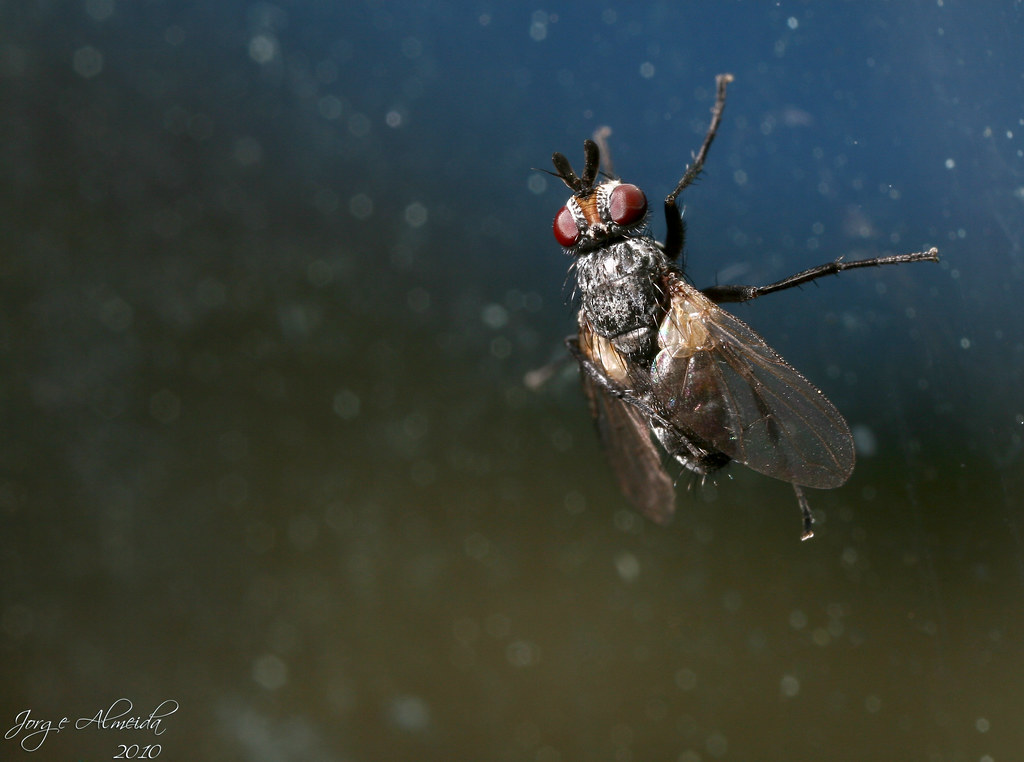Diptera.info :: Identification queries :: Diptera (adults)
Who is here? 1 guest(s)
|
Swarm of Tachinidae
|
|
| Rui Andrade |
Posted on 01-07-2010 22:59
|
|
Member Location: Portugal Posts: 3123 Joined: 19.06.07 |
Last Wednesday I found several tachinds swarming near a tree. It's the first time I see such behaviour in Tachinidae. Does anyone know the species and the reason for this behaviour? location: Porto, Portugal date: 30/06/2010 Rui Andrade attached the following image:  [88.01Kb] |
| Rui Andrade |
Posted on 01-07-2010 22:59
|
|
Member Location: Portugal Posts: 3123 Joined: 19.06.07 |
.
Rui Andrade attached the following image:  [74.89Kb] |
| Rui Andrade |
Posted on 01-07-2010 23:00
|
|
Member Location: Portugal Posts: 3123 Joined: 19.06.07 |
YouTube Video |
| jorgemotalmeida |
Posted on 01-07-2010 23:04
|
|
Member Location: Viseu - PORTUGAL Posts: 9296 Joined: 05.06.06 |
I told you this afternoon that this could be a P. montivaga. |
| Rui Andrade |
Posted on 01-07-2010 23:11
|
|
Member Location: Portugal Posts: 3123 Joined: 19.06.07 |
To me the arista doesn't seem to match that species. |
| ChrisR |
Posted on 02-07-2010 09:48
|
|
Super Administrator Location: Reading, England Posts: 7700 Joined: 12.07.04 |
P. montivaga is possible but it would be nice to see the wing venation better, with less flash-reflection. In particular I'd like to see the scutellars and also whether any wing veins have hairs. 
Edited by ChrisR on 02-07-2010 09:48 Manager of the UK Species Inventory in the Angela Marmont Centre for UK Biodiversity at the Natural History Museum, London. |
| Rui Andrade |
Posted on 02-07-2010 10:08
|
|
Member Location: Portugal Posts: 3123 Joined: 19.06.07 |
Thanks Chris. Below you can find more photos. They are not very good, but I hope they will be good enough to reach a conclusion. Rui Andrade attached the following image:  [54.46Kb] |
| Rui Andrade |
Posted on 02-07-2010 10:08
|
|
Member Location: Portugal Posts: 3123 Joined: 19.06.07 |
.
Rui Andrade attached the following image:  [63.64Kb] |
| Rui Andrade |
Posted on 02-07-2010 10:09
|
|
Member Location: Portugal Posts: 3123 Joined: 19.06.07 |
.
Rui Andrade attached the following image:  [77.09Kb] |
| ChrisR |
Posted on 02-07-2010 12:47
|
|
Super Administrator Location: Reading, England Posts: 7700 Joined: 12.07.04 |
Hmm, doesn't look siphoniine to me (so not Actia or Peribaea etc) ... I think Jorge could be right with Paracraspedothrix but let's wait for Theo just in case you have some other alternatives down there  Or just catch and send me a few and I'll tell you exactly what it is! Or just catch and send me a few and I'll tell you exactly what it is! 
Manager of the UK Species Inventory in the Angela Marmont Centre for UK Biodiversity at the Natural History Museum, London. |
| Rui Andrade |
Posted on 02-07-2010 22:57
|
|
Member Location: Portugal Posts: 3123 Joined: 19.06.07 |
I've collected some specimens and I'll send them to you. But maybe only in August. |
| Liekele Sijstermans |
Posted on 03-07-2010 00:39
|
|
Member Location: Geldermalsen Netherlands Posts: 305 Joined: 16.04.05 |
I think this is Eloceria delecta. According to Theo in previous track this species does not have palps. You could check that easily. I have seen swarming of Tachinidae before with Siphona and Clausicella. According to Andersen (1982) there is swarming of males in order to facilitate quick fertilization of female. Liekele |
|
|
|
| jorgemotalmeida |
Posted on 03-07-2010 09:26
|
|
Member Location: Viseu - PORTUGAL Posts: 9296 Joined: 05.06.06 |
Great find! Apanha muitas dessas! 
Edited by jorgemotalmeida on 03-07-2010 09:27 |
| ChrisR |
Posted on 03-07-2010 09:30
|
|
Super Administrator Location: Reading, England Posts: 7700 Joined: 12.07.04 |
Liekele Sijstermans wrote: I think this is Eloceria delecta. Interesting thought ... the Eloceria delecta I have seen here seem to be a bit bigger than the images but if Rui sends me some then I'll let you know 
Manager of the UK Species Inventory in the Angela Marmont Centre for UK Biodiversity at the Natural History Museum, London. |
| Zeegers |
Posted on 03-07-2010 10:50
|
|
Member Location: Soest, NL Posts: 18899 Joined: 21.07.04 |
Very interesting. Wing venation is very characteristic here, need to check my collection. Presence of palpus is sexual dimorph in Eloceria. If this would be Eloceria, it would be a female. Which would be strange, given the swarming behaviour. Swarming is known from males Siphona ingerae and male Entomophaga. Clearly, both don't fit here. Theo |
|
|
|
| Zeegers |
Posted on 03-07-2010 15:58
|
|
Member Location: Soest, NL Posts: 18899 Joined: 21.07.04 |
I'd say Eloceria delecta is an excellent suggestion. In which, by the way, the lack of palpus is NOT sexual dimorph. My mistake Theo |
|
|
|
| Rui Andrade |
Posted on 13-07-2010 01:12
|
|
Member Location: Portugal Posts: 3123 Joined: 19.06.07 |
Thank you all very much!! Chris, I'll send them to you, just wait a little bit. |
| ChrisR |
Posted on 13-07-2010 09:32
|
|
Super Administrator Location: Reading, England Posts: 7700 Joined: 12.07.04 |
Thanks 
Manager of the UK Species Inventory in the Angela Marmont Centre for UK Biodiversity at the Natural History Museum, London. |
| jorgemotalmeida |
Posted on 14-07-2010 20:04
|
|
Member Location: Viseu - PORTUGAL Posts: 9296 Joined: 05.06.06 |
Yesterday I was in Caramulo mountain... and I think I also saw the swarm of Eloceria. Is it right?
Edited by jorgemotalmeida on 14-07-2010 20:17 |
| Jump to Forum: |














